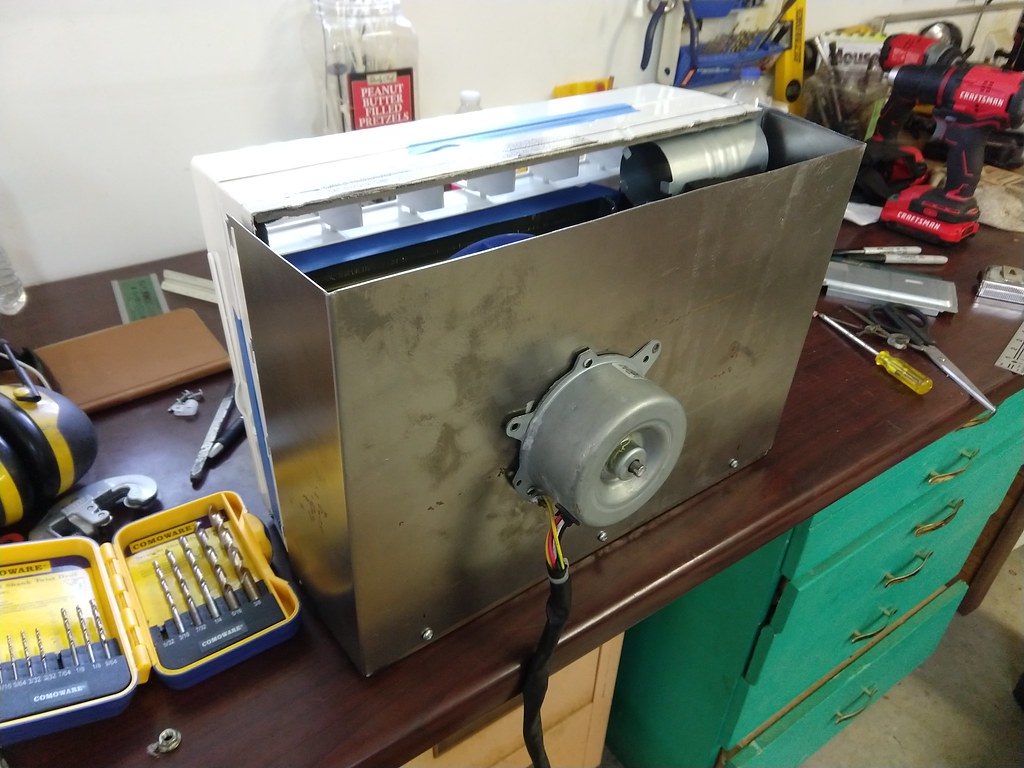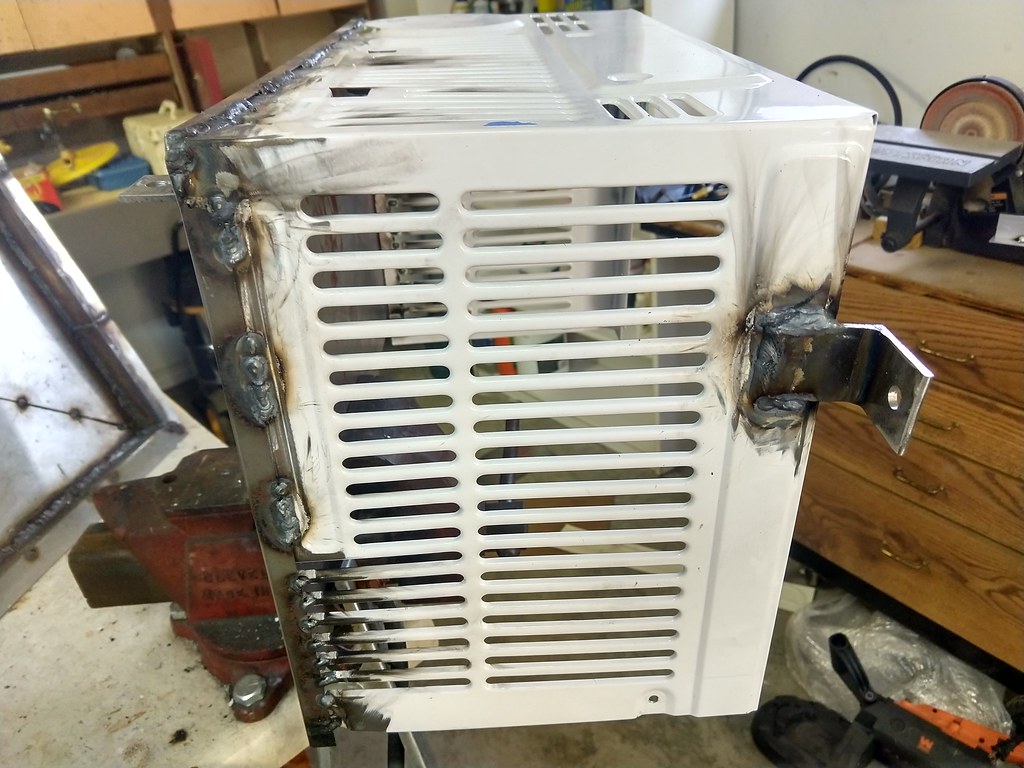I took at a look at those. 8,000btu is a bit larger than I need. The real issue is the condenser is ~20" tall, which is not conducive to underbody mounting. The compressors are also 12-14" tall, which doesn't make for easy interior mounting once you include vibration dampening. Now I could get flexible hoses, and mount the exterior unit on a bumper swing out. But that's just a non starter for me.
My current plan is to mount the condenser centered left/right, about 24" behind the axle. The solid side will face forward. So the condenser and fan will be protected from the worst of it. I also have 11" plastic mudflaps on the rear. Depending on my experience, I may add shutters or slip covers over the side vents. I am also on the lookout for a corrosion inhibiting coating for the aluminum condenser fins. The pipes are all copper. Time will tell how long it lasts, but it was a cheap unit, so if the condenser corrodes out, I can probably swap for a similar unit. If it ends up working well I will just buy a used one to keep for spare parts.
 IMG_20200714_131653625
IMG_20200714_131653625 by
J Luth, on Flickr
 IMG_20200714_150548356
IMG_20200714_150548356  IMG_20200715_091442550
IMG_20200715_091442550  IMG_20200715_101908209
IMG_20200715_101908209  IMG_20200715_101912718
IMG_20200715_101912718 IMG_20200714_150548356
IMG_20200714_150548356  IMG_20200715_091442550
IMG_20200715_091442550  IMG_20200715_101908209
IMG_20200715_101908209  IMG_20200715_101912718
IMG_20200715_101912718






 IMG_20200714_131653625
IMG_20200714_131653625

 IMG_20200716_124119565
IMG_20200716_124119565 IMG_20200716_144122080
IMG_20200716_144122080 IMG_20200716_170400958
IMG_20200716_170400958
